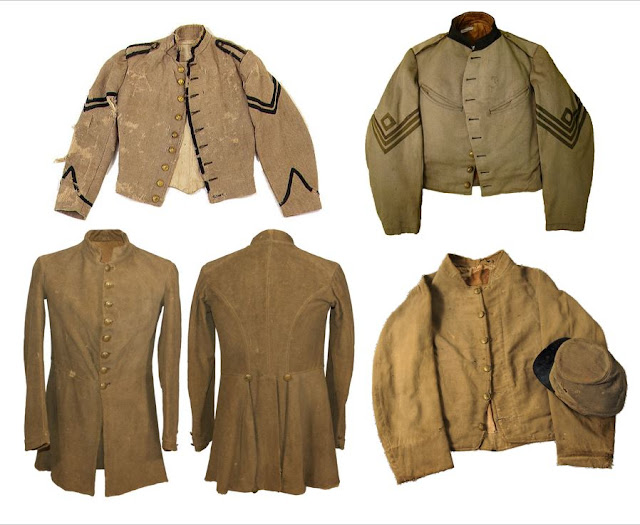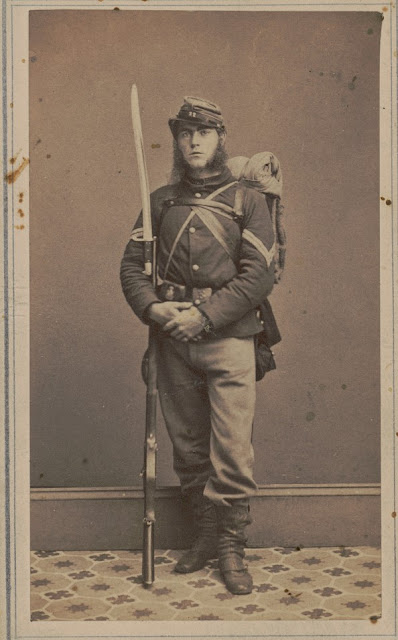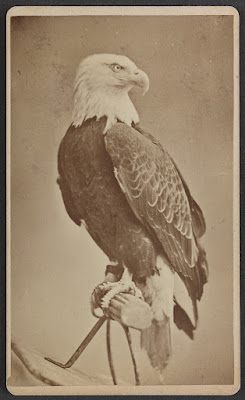Spoils of War: Trophies from First Murfreesboro
On Saturday morning July 26, 1862, the editors of the Atlanta Southern Confederacy heard a ruckus in the streets and looking outdoors saw that a large and visibly angry crowd had gathered in front of Hunnicutt & Taylor’s store. Hanging above the window was a “very large and handsome Lincoln flag,” the editors later remembered. “In full view from our window, spread to the breeze waving to and fro was the beautiful flag of the once powerful and honored, but now broken and disgraced, United States.”
The stars and
stripes had not flown in Atlanta since January 1861 when Georgia became the
fifth state to secede from the Union. And now this hated emblem floating in the
center of Atlanta? Lieutenant Robert Graham, serving in Co. H of the 2nd
Georgia Cavalry, soon provided an explanation- the flag was the regimental flag
of the 9th Michigan Infantry, captured during the recent engagement
at Murfreesboro, Tennessee. The “rising wrath” of the crowd subsided once they
saw that the Union of the flag was down, and accepted Lieutenant Graham’s
explanation.
The editors of
the Southern Confederacy ventured across the street to Hunnicutt &
Taylor’s to examine the flag up close. “We found it to be a magnificent
trophy,” they noted. “It is the largest and handsomest flag we ever saw. It is
of the finest silk, the brightest colors, and is most tastefully wrought- the
stars and name of the regiment being in the most elegant needlework and the whole
surrounded by the finest silk fringe.”
 |
| A portion of a later flag carried by the 9th Michigan Infantry and now in the hands of the Michigan State Capitol. The location of the original flag described in this article is unknown. |
Lieutenant
Graham brought several trophies home from the battle besides the flag, including the brigadier
general epaulettes that belonged to General William W. Duffield and two captains’
swords, one of which belonged to Captain Oliver C. Rounds who commanded Company
B of the 9th Michigan. “It is of the most elegant workmanship and
finish; we never saw a service sword that was more beautiful,” the editors
gushed. “It had on it this inscription: ‘Presented to O.C. Rounds, Captain,
Chandler Guards, 9th Regiment, Mich., by his friends of Niles,
Michigan.”
While the editors
may have gushed about his beautiful sword, they had a much less favorable view
of Captain Rounds. As it turns out, Captain Rounds was the provost marshal in
Murfreesboro at the time of Forrest’s attack on July 13, 1862. While his
Company B fought the 2nd Georgia Cavalry at the Rutherford County
Courthouse (see “Charging the Rutherford County Courthouse”), Lieutenant Graham
claimed that Captain Rounds was found hiding under the bed of his bride to be at a
home in Murfreesboro.
The young woman he was courting
was Corine Reeves who lived in the mansion of her grandmother Katherine Reeves.
The Reeves family were known for their Union sympathies and offered room and
board to Federal officers, including Rounds’ commanding officer Lieutenant
Colonel John G. Parkhurst. Parkhurst himself was courting Corine’s older sister Josephine in July 1862. The editors of
the Confederacy would perhaps be scandalized (but not surprised) to
learn that while Captain Rounds was wooing Corine, he already had a wife in Michigan! [The 1860 census
states that Rounds was living in Niles, Michigan with his wife Sarah; they
remained married and are buried together at Inglewood Park near Los Angeles, California.]
All that aside, as the Confederacy reported it, Captain Rounds was due to marry Corine on the evening of July 13th. The wedding day certainly didn’t go according to plan. After taking the courthouse in the center of town, Confederate detachments spread throughout the city to capture other members of the garrison. Lieutenant Graham learned from local residents that Rounds was staying in the Reeves’ mansion and “went to the house where he was met by the captain’s intended wife, who, in answer to his inquiries, assured him that Captain Rounds was not in the house.” Reeves’ neighbors, watching this, assured Graham that Rounds was indeed in the house, so the Georgian entered the house to investigate for himself. “He soon discovered him under the bed and, seizing him by the foot, dragged him out and received from him his sword."
The current locations of both the 9th Michigan flag and Captain Rounds’ sword are unknown.Sources:
“A Union Flag Displayed in Atlanta,” Atlanta Southern Confederacy (Georgia), July 27, 1862, pg. 3
John Gibson Parkhurst Collection, Michigan State University, https://d.lib.msu.edu/cwc-jgparkhurst










Comments
Post a Comment